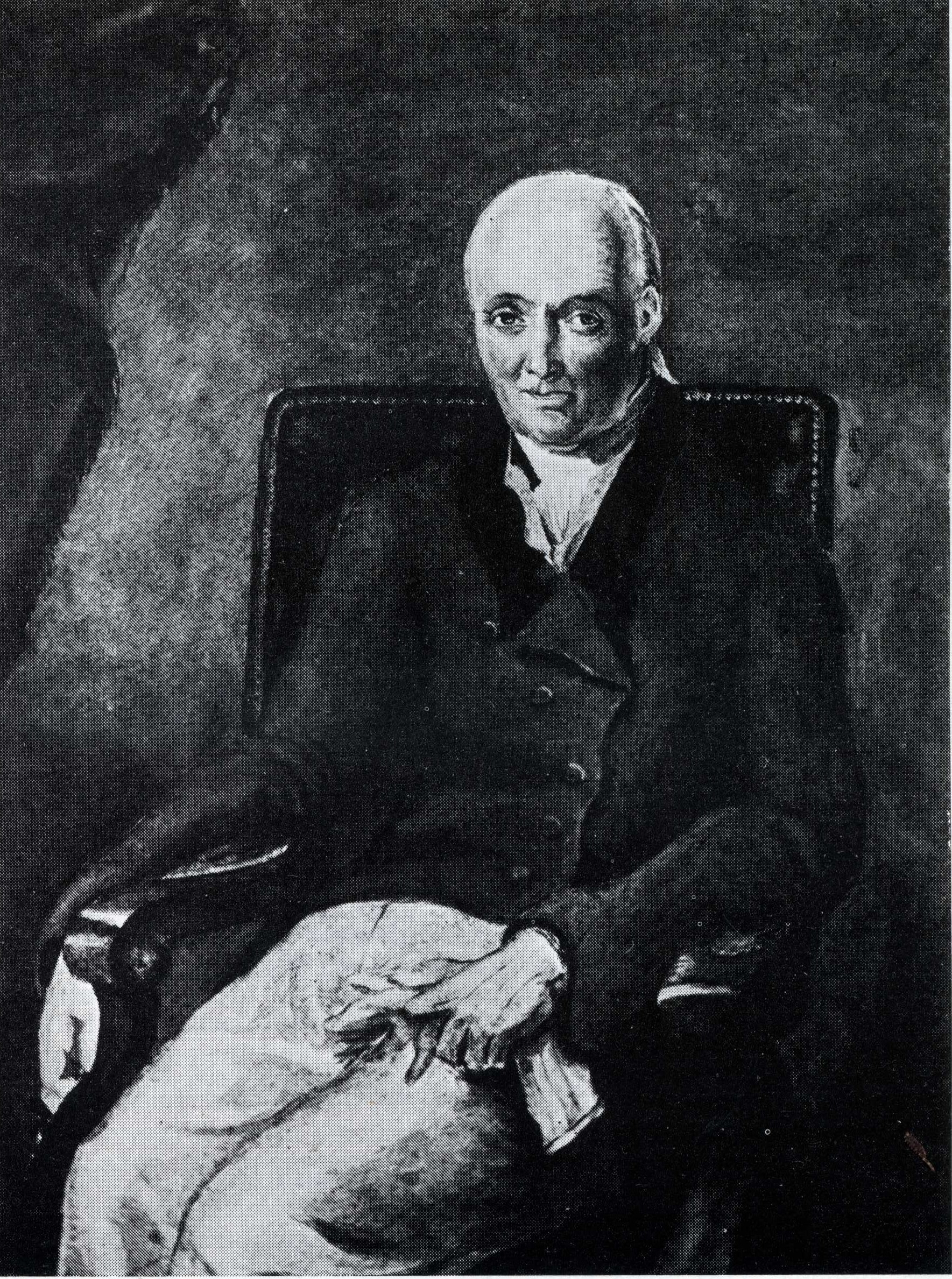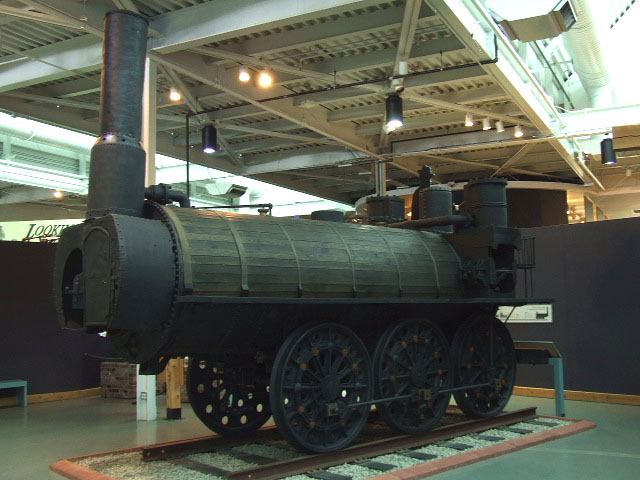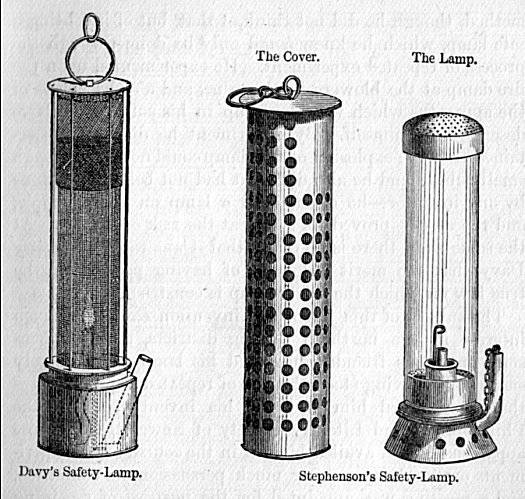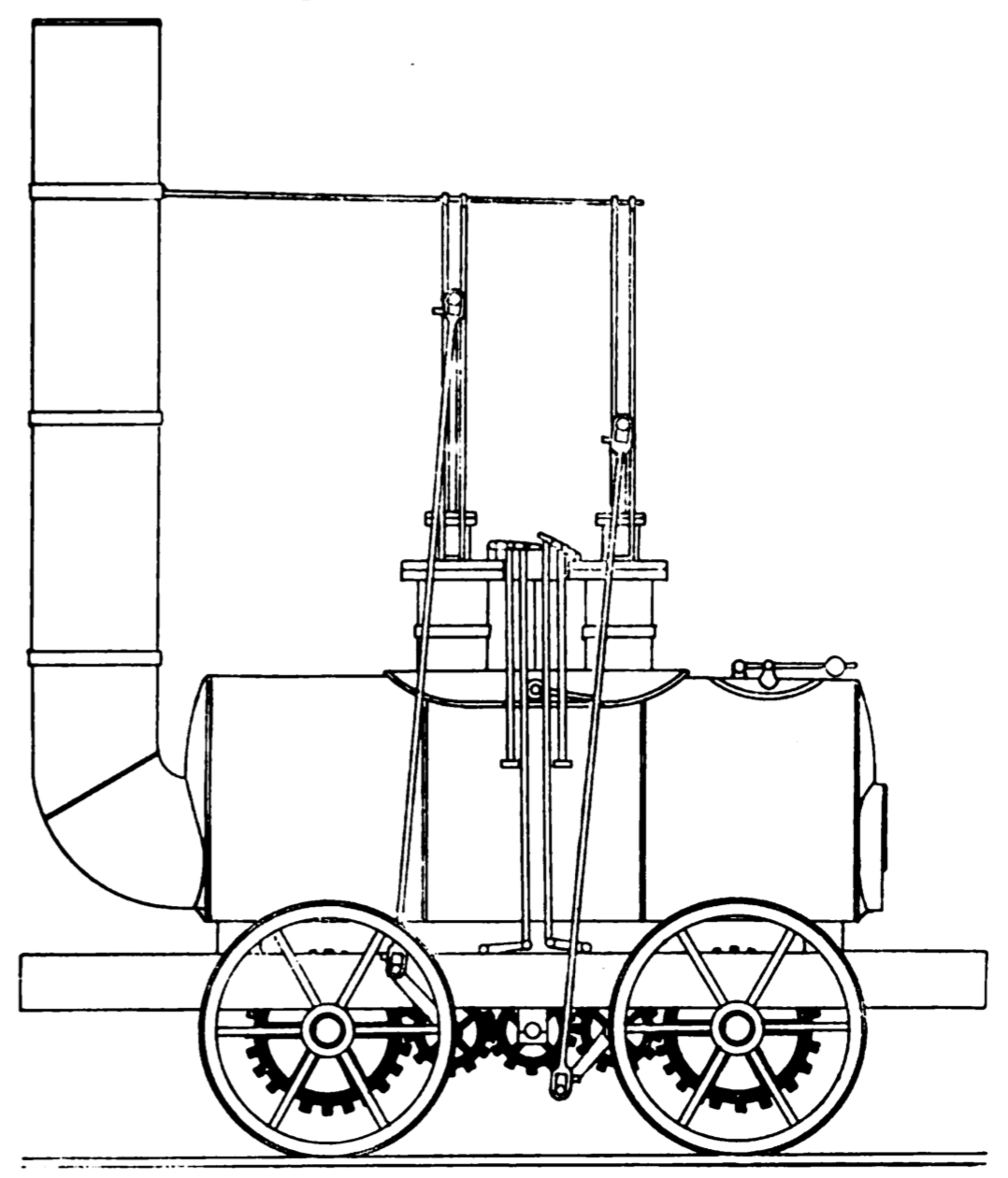|
Wylam
Wylam is a village and civil parish in the county of Northumberland, England. It is located about west of Newcastle upon Tyne. It is famous for the being the birthplace of George Stephenson, one of the early railway pioneers. George Stephenson's Birthplace, his cottage, can be found on the north bank of the Tyne east of the village. It is owned by the National Trust. Wylam has further connections with the early railway pioneers. The steam locomotive engineer Timothy Hackworth, who worked with Stephenson, was also born here. William Hedley who was born in the nearby village of Newburn attended the village school. He later went on to design and manufacture Puffing Billy in 1813, two years before George Stephenson produced his first locomotive Blücher. Christopher Blackett as lord of the manor in the first 30 years of the 19th century provided the entrepreneurial drive that encouraged these engineers. History Once an industrial workplace with collieries and an ironwor ... [...More Info...] [...Related Items...] OR: [Wikipedia] [Google] [Baidu] |
Wylam Dilly
''Wylam Dilly'' is the second oldest surviving railway locomotive in the world; it was built circa 1815 by William Hedley and Timothy Hackworth for Christopher Blackett, the owner of Wylam colliery, west of Newcastle upon Tyne. ''Wylam Dilly'' was initially designed for and used on the Wylam Waggonway to transport coal. The four driving wheels are connected by a train of spur wheels driven by a central crankshaft. Because it proved too heavy for the cast iron plateway in its original form, the locomotive was rebuilt with eight wheels in 1815, but returned to its original design in 1830 after the track was relaid with wrought iron rails. The locomotive was still at work in 1862 when it was moved to Craghead Colliery. After withdrawal it was presented to the Edinburgh Museum of Science and Art in 1883, now called the National Museum of Scotland, where it is currently on display. The first steam locomotive of its class, '' Puffing Billy'', is in the Science Museum in Lond ... [...More Info...] [...Related Items...] OR: [Wikipedia] [Google] [Baidu] |
Christopher Blackett
Christopher Blackett (c. 1751 – 25 January 1829) owned the Northumberland colliery at Wylam that built ''Puffing Billy'', the first commercial adhesion steam locomotive. He was also the founding owner of ''The Globe'' newspaper in 1803. Life Blackett was born a Blackett of Wylam and the eldest son by the second marriage of John Blackett, a High Sheriff of Northumberland, whose family descended from Christopher Blackett, an elder brother of Sir William Blackett, and Alice Fenwick, sole heir of her father. In 1659 the coal-rich manor of Wylam passed by inheritance from the Fenwicks to Christopher Blackett (ancestor of article subject) and around 1748 the Wylam waggonway was constructed by John Blackett. This enabled coal to be transported five miles from Wylam colliery to the staithes at Lemington, then on the River Tyne. The Christopher Blackett of this article succeeded to the lordship of the Manor of Wylam and its collieries in 1800. Prior to this he had been Pos ... [...More Info...] [...Related Items...] OR: [Wikipedia] [Google] [Baidu] |
Puffing Billy (locomotive)
''Puffing Billy'' is the world's oldest surviving steam locomotive, constructed in 1813–1814 by colliery viewer William Hedley, enginewright Jonathan Forster and blacksmith Timothy Hackworth for Christopher Blackett, the owner of Wylam Colliery near Newcastle upon Tyne, in the United Kingdom. It was employed to haul coal chaldron wagons from the mine at Wylam to the docks at Lemington in Northumberland. History Precursors The first steam-powered locomotive on rails was built by Richard Trevithick in either 1802 or 1804. He built several locomotives, and although the success of his 1802 locomotive at Coalbrookdale is questioned, his 1804 locomotive ran near the Penydarren Ironworks, Pen-y-Darren Ironworks in Merthyr Tydfil, South Wales successfully enough to haul five wagons of iron for nine miles, winning a wager. Its excessive weight cracked the iron rails, rendering it impractical, and steam locomotives were not adopted at the time. In 1810, the Durham Coalfield was d ... [...More Info...] [...Related Items...] OR: [Wikipedia] [Google] [Baidu] |
Timothy Hackworth
Timothy Hackworth (22 December 1786 – 7 July 1850) was an English steam locomotive engineer who lived in Shildon, County Durham, England and was the first locomotive superintendent of the Stockton and Darlington Railway. Youth and early work Timothy Hackworth was born in Wylam in 1786, five years after his fellow railway pioneer George Stephenson had been born in the same village. Hackworth was the eldest son of John Hackworth who occupied the position of foreman blacksmith at Wylam Colliery until his death in 1804; the father had already acquired a considerable reputation as a mechanical worker and boiler maker. At the end of his apprenticeship in 1810 Timothy took over his father's position. Since 1804, the mine owner, Christopher Blackett had been investigating the possibilities of working the mine's short colliery tramroad by steam traction. Blackett set up a four-man working group including himself, William Hedley, the viewer; Timothy Hackworth, the new foreman smith a ... [...More Info...] [...Related Items...] OR: [Wikipedia] [Google] [Baidu] |
Newburn
Newburn is a village and district of Newcastle upon Tyne, in Tyne and Wear, England. Situated on the North bank of the River Tyne, it is built rising up the valley from the river. It is situated approximately from the city centre, east of Hexham and south south west of Morpeth, Northumberland, Morpeth. In the 2001 census, the population was given as 9,301, increasing to 9,536 at the 2011 Census. Newburn is in the City of Newcastle upon Tyne, Newcastle upon Tyne district of Tyne and Wear and is part of the parliamentary constituency of Newcastle upon Tyne North (UK Parliament constituency), Newcastle upon Tyne North. Historically, the area was larger than Newcastle upon Tyne as it was the most eastern Ford (crossing), fordable point of the River Tyne. The area has Ancient Rome, Roman remains, and a Norman architecture, Norman church dating from 1070 AD. In 1640, the Battle of Newburn took place. The area grew with the Industrial Revolution with the discovery of coal, an ... [...More Info...] [...Related Items...] OR: [Wikipedia] [Google] [Baidu] |
Blackett Of Wylam
The Blacketts of Wylam were a branch of the Blackett family of Hoppyland, County Durham, England and were related to the Blackett baronets. John Blackett was High Sheriff of Northumberland in 1692, He married Mary, daughter and heir of Richard Errington. Google Books John Blackett (died 1714) was the son of John (above), grandson of Christopher Blackett of Hoppyland (1612-1675) and the great-nephew of Sir William Blackett. In 1685 he acquired two farms at Wylam, Northumberland, and the Manor estate including the mineral rights, from the exploitation of which the family was to benefit greatly. John was High Sheriff of Northumberland in 1714. His residence was Wylam Hall. He married Elizabeth, daughter of John Bacon. John Blackett (1712-1769), his son, High Sheriff in 1738, sold the families Co Durham properties and established coal mining and Wylam Colliery in the township in the mid 18th century. The waggonway connecting the colliery to the River Tyne at Lemington was bui ... [...More Info...] [...Related Items...] OR: [Wikipedia] [Google] [Baidu] |
George Stephenson's Birthplace
George Stephenson's Birthplace is the 18th-century stone cottage home of rail pioneer George Stephenson. Located along the north bank of the River Tyne in the village of Wylam, Northumberland, the cottage is owned by the National Trust and until recently it was open to the public as a historic house museum. The house also featured exhibits about Stephenson's Rocket, an early steam locomotive A steam locomotive is a locomotive that provides the force to move itself and other vehicles by means of the expansion of steam. It is fuelled by burning combustible material (usually coal, Fuel oil, oil or, rarely, Wood fuel, wood) to heat .... The Museum is no longer open to the public. The House was built circa 1750 and is a Grade II* listed building. When George Stephenson was born, in 1781, there would have been four families living in this humble two storey cottage. The house is accessible by bike and is a walk from the nearest car park. References External links Georg ... [...More Info...] [...Related Items...] OR: [Wikipedia] [Google] [Baidu] |
George Stephenson
George Stephenson (9 June 1781 – 12 August 1848) was an English civil engineer and Mechanical engineering, mechanical engineer during the Industrial Revolution. Renowned as the "Father of Railways", Stephenson was considered by the Victorian era, Victorians as a great example of diligent application and thirst for improvement. His chosen Track gauge#The Stockton and Darlington Railway, rail gauge, sometimes called "Stephenson gauge", was the basis for the standard gauge used by most of the world's railways. Pioneered by Stephenson, rail transport was one of the most important technological inventions of the 19th century and a key component of the Industrial Revolution. Built by George and his son Robert Stephenson, Robert's company Robert Stephenson and Company, the Locomotion No. 1, ''Locomotion'' No. 1 was the first steam locomotive to carry passengers on a public rail line, the Stockton and Darlington Railway in 1825. George also built the first public inter-city railway ... [...More Info...] [...Related Items...] OR: [Wikipedia] [Google] [Baidu] |
William Hedley
William Hedley (13 July 1779 – 9 January 1843) was born in Newburn, near Newcastle upon Tyne. He was one of the leading industrial engineers of the early 19th century, and was instrumental in several major innovations in early railway development. While working as a ' viewer' or manager at Wylam Colliery near Newcastle upon Tyne, he built the first practical steam locomotive which relied simply on the adhesion of iron wheels on iron rails. Early locomotives Before Hedley's time, such locomotives were far too heavy for the track that was then available. While most lines used cable haulage with stationary engines, various other schemes had been tried. William Chapman at the Butterley Company in 1812, attempted to use a steam engine which hauled itself along a cable, while, at the same company, Brunton had produced the even less successful "mechanical traveller", or ''Steam Horse''. However, in 1812, Matthew Murray and John Blenkinsop had produced the first twin cylinde ... [...More Info...] [...Related Items...] OR: [Wikipedia] [Google] [Baidu] |
Newcastle Upon Tyne
Newcastle upon Tyne, or simply Newcastle ( , Received Pronunciation, RP: ), is a City status in the United Kingdom, cathedral city and metropolitan borough in Tyne and Wear, England. It is England's northernmost metropolitan borough, located on the River Tyne's northern bank opposite Gateshead to the south. It is the most populous settlement in the Tyneside conurbation and North East England. Newcastle developed around a Roman Empire, Roman settlement called Pons Aelius. The settlement became known as ''Monkchester'' before taking on the name of The Castle, Newcastle, a castle built in 1080 by William the Conqueror's eldest son, Robert Curthose. It was one of the world's largest ship building and repair centres during the Industrial Revolution. Newcastle was historically part of the county of Northumberland, but governed as a county corporate after 1400. In 1974, Newcastle became part of the newly-created metropolitan county of Tyne and Wear. The local authority is Newcastle Ci ... [...More Info...] [...Related Items...] OR: [Wikipedia] [Google] [Baidu] |
Blücher (locomotive)
George Stephenson built a number of experimental steam locomotives to work in the Killingworth Colliery between 1814 and 1826. Background George Stephenson was appointed as engine-wright at Killingworth Colliery in 1812 and immediately improved the haulage of the coal from the mine using fixed engines. But he had taken an interest in Blenkinsop's engines in Leeds and Blackett's experiments at Wylam colliery, where he had been born. By 1814 he persuaded the lessees of the colliery to fund a "travelling engine" which first ran on 25 July. By experiment he confirmed Blackett's observation that the friction of the wheels was sufficient on an iron railway without cogs but still used a cogwheel system in transmitting power to the wheels. ''Blücher'' ''Blücher'' (often spelled ''Blutcher'') was built by George Stephenson in 1814; the first of a series of locomotives that he designed in the period 1814–16 which established his reputation as an engine designer and laid the foun ... [...More Info...] [...Related Items...] OR: [Wikipedia] [Google] [Baidu] |
Northumberland
Northumberland ( ) is a ceremonial counties of England, ceremonial county in North East England, on the Anglo-Scottish border, border with Scotland. It is bordered by the North Sea to the east, Tyne and Wear and County Durham to the south, Cumbria to the west, and the Scottish Borders council area to the north. The town of Blyth, Northumberland, Blyth is the largest settlement. Northumberland is the northernmost county in England. The county has an area of and a population of 320,274, making it the least-densely populated county in England. The south-east contains the largest towns: Blyth, Northumberland, Blyth, Cramlington, Ashington, Bedlington, and Morpeth, Northumberland, Morpeth, the last of which is the administrative centre. The remainder of the county is rural, the largest towns being Berwick-upon-Tweed in the far north and Hexham in the south-west. For local government purposes Northumberland is a Unitary authorities of England, unitary authority area. The county Histo ... [...More Info...] [...Related Items...] OR: [Wikipedia] [Google] [Baidu] |





